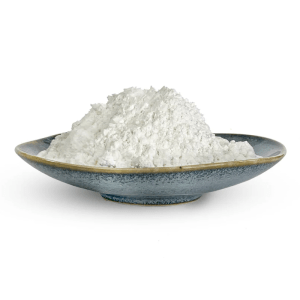
# Starch Sugar: Production and Applications in Food Industry
## Introduction to Starch Sugar
Starch sugar, also known as glucose syrup or corn syrup, is a sweetener derived from starch through hydrolysis. It plays a crucial role in the food industry due to its functional properties and versatility. This article explores the production process of starch sugar and its various applications in food products.
## Production Process of Starch Sugar
The production of starch sugar involves several key steps:
### 1. Starch Extraction
The process begins with the extraction of starch from raw materials such as corn, wheat, potatoes, or cassava. The chosen source depends on regional availability and economic factors.
### 2. Liquefaction
Keyword: Starch Sugar
The extracted starch is mixed with water and treated with enzymes (typically alpha-amylase) at high temperatures (90-110°C) to break down the long starch molecules into shorter dextrin chains.
### 3. Saccharification
During this stage, the liquefied starch is further broken down into simpler sugars using enzymes like glucoamylase. The temperature is reduced to 55-60°C to optimize enzyme activity.
### 4. Purification
The resulting sugar solution undergoes filtration and purification processes to remove impurities, proteins, and other unwanted components.
### 5. Concentration
The purified solution is concentrated through evaporation to achieve the desired solids content, typically between 70-80%.
### 6. Final Processing
Depending on the desired product, additional processing steps may include:
– Ion exchange for further purification
– Hydrogenation to produce sugar alcohols
– Blending with other sweeteners
## Types of Starch Sugar
The food industry utilizes various forms of starch sugar:
### Glucose Syrup
A mixture of glucose, maltose, and higher saccharides with varying degrees of sweetness and viscosity.
### High Fructose Corn Syrup (HFCS)
Produced by enzymatically converting some glucose to fructose, resulting in a sweeter product.
### Maltodextrin
A mildly sweet polysaccharide used primarily as a thickener or filler.
### Dextrose
Pure crystalline glucose used in various food applications.
## Applications in the Food Industry
Starch sugar finds numerous applications across different food sectors:
### Bakery Products
– Provides sweetness and moisture retention in cakes and pastries
– Enhances browning through Maillard reactions
– Improves texture and extends shelf life
### Confectionery
– Prevents crystallization in candies and chocolates
– Controls viscosity in gummy candies
– Provides bulk and sweetness in various sweets
### Beverages
– Used as a sweetener in soft drinks and juices
– Provides body and mouthfeel in low-calorie drinks
– Acts as a fermentation substrate in alcoholic beverages
### Dairy Products
– Enhances texture in ice cream and yogurt
– Provides sweetness in flavored milk products
– Prevents ice crystal formation in frozen desserts
### Processed Foods
– Acts as a humectant in meat products
– Provides energy in sports nutrition products
– Enhances flavor in sauces and dressings
## Advantages of Starch Sugar
Starch sugar offers several benefits to food manufacturers:
– Cost-effective compared to sucrose
– Excellent solubility and mixability
– High stability under various processing conditions
– Customizable sweetness profile
– Functional properties beyond just sweetness
## Future Trends
The starch sugar industry continues to evolve with:
– Development of cleaner label alternatives
– Increased demand for non-GMO and organic options
– Advancements in enzymatic technologies
– Growing interest in low-glycemic index sweeteners
As consumer preferences and technological capabilities change, starch sugar will likely maintain its important position in the food industry while adapting to new market demands.
